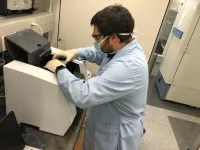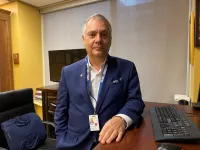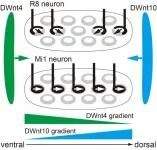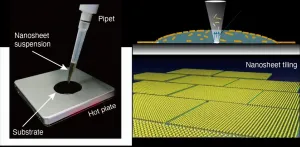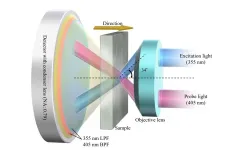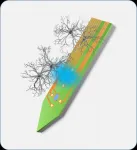(Press-News.org) SINGAPORE, 12 January 2021 - Researchers from Duke-NUS Medical School in Singapore and Columbia University in the US have solved how Wnt proteins, which play a fundamental role in cell proliferation and differentiation, hitch a ride to travel from their cellular factory to the cell surface. Drugs that interfere with Wnt transport, like the made-in-Singapore anti-cancer drug ETC-159, can be exploited to treat diseases with excess Wnt signalling, such as cancer and fibrosis.
"Since excessive Wnt signalling can drive cancer, supress immunity and trigger fibrosis, there is great interest in trying to block this transport link," said Professor David Virshup, the director of Duke-NUS' Cancer and Stem Cell Biology Programme and a corresponding author of the study.
Wnts are proteins that send signals from cells to tell tissues and organs what is going on around them. Animals from sponges and jellyfish to humans rely on Wnt signalling to build their body plans. In adult humans, Wnt continues to control functions, including maintaining hair, intestines and tastebuds. Unlike most other cell-to-cell signalling proteins, however, Wnts have a fatty acid attached to them. Because of this attached fatty acid, Wnts require a dedicated transporter protein, called Wntless (WLS).
But how the WLS protein actually carries the fatty acid-modified Wnt signal around cells and between cells has not been understood.
In this work, published last week in Cell, the researchers determined the molecular structure of Wnt as it is being carried by Wntless using cryo-electron microscopy. This method allowed the researchers to study the structures of the two proteins in a near native state without interference from the staining or fixing required by traditional electron microscopy.
"We determined the structure of the short-range signalling molecule Wnt in complex with WLS. The structure explains why these two proteins form such a tight complex, as we observe a very large binding surface between the two proteins," said Filippo Mancia, an associate professor of Physiology and Cellular Biophysics at Columbia University Medical Center and the co-corresponding author of the study.
"The structure also reveals how the fatty acid attached to Wnt can be shielded in the membrane when bound to WLS and helps to explain why a receptor, such as WLS, is necessary to transport Wnt from inside the cells to the cell membrane," added Rie Nygaard, an associate research scientist in the Mancia Lab, who led the structural biology component of the project.
The structure revealed that WLS has two domains: a transmembrane domain and a second domain that resembles an ancient fatty acid regulator. The fatty acid tail of Wnt is inserted into a conserved cavity in the transmembrane domain of WLS.
The transmembrane domain where the fatty acid tail binds is a promising drug target as it is structurally related to the family of G-protein-coupled receptors (GPCRs), which have been found to be very druggable.
"What's even more encouraging for us is that we already have a candidate drug that blocks this particular interaction and that's ETC-159," said Yu Jia, who is one of the authors of the study and a Senior Research Fellow at Duke-NUS' Cancer and Stem Cell Biology Programme.
ETC-159 is a made-in-Singapore anti-cancer drug, which was jointly developed by Duke-NUS and the Agency for Science, Technology and Research. The Wnt-inhibitor is a novel small-molecule drug candidate that targets a range of cancers. It is currently progressing through clinical trials as a treatment for a subset of colorectal and gynaecological cancers.
Over the next year or so, the researcher team hopes to build on this structure to understand in detail how Wnts get loaded onto WLS and how WLS is delivered to its receptors.
INFORMATION:
Conflict between divorced or separated parents increases the risk of children developing physical and mental health problems.
A new study from the Arizona State University Research and Education Advancing Children's Health (REACH) Institute has found that children experience fear of being abandoned when their divorced or separated parents engage in conflict. Worrying about being abandoned predicted future mental health problems in children. The work will be published in Child Development on January 12.
"Conflict is a salient stressor for kids, and the link between exposure to interparental conflict ...
WASHINGTON--The Endocrine Society is calling on policymakers to include government negotiation as part of an overall strategy to reduce insulin prices in its updated position statement published today in The Journal of Clinical Endocrinology & Metabolism.
More than 34 million Americans have diabetes, and another 88 million are at risk for developing the disease. The cost of insulin has nearly tripled in the past 15 years, and a lack of transparency in the drug supply chain has made it challenging to identify and address the causes of soaring costs.
Federal law currently prohibits Medicare, which accounts for a third of all drug spending, from negotiating directly with pharmaceutical companies over drug prices. Legislation empowering the ...
To properly monitor and help curb the spread of COVID-19, several millions of diagnostic tests are required daily in just the United States alone. There is still a widespread lack of COVID-19 testing in the U.S. and many of the clinical diagnostics protocols require extensive human labor and materials that could face supply shortages and present biosafety concerns.
The current gold standard for COVID-19 diagnostic testing in the U.S., developed by the U.S. Centers for Disease Control and Prevention (CDC), is quantitative PCR-based (qPCR) molecular tests that detect the presence of the viral ...
Toronto (Jan. 12, 2021) - More than half the clinicians surveyed at the Peter Munk Cardiac Centre reported burnout and high levels of distress according to a series of studies published today in the Canadian Medical Association Journal Open (CMAJ-OPEN). In these studies carried out before the COVID-19 pandemic, 78% of nurses, 73% of allied health staff and 65% of physicians described experiencing burnout.
"In my 35 years as a physician I have never seen a more serious issue for clinicians than burnout," says lead author Dr. Barry Rubin, Chair and Medical Director, the Peter Munk Cardiac Centre, ...
A new structural arrangement of atoms shows promise for developing safer batteries made with solid materials. Scientists at Kyoto University's Institute for Integrated Cell-Material Sciences (iCeMS) designed a new type of 'antiperovskite' that could help efforts to replace the flammable organic electrolytes currently used in lithium ion batteries. Their findings were described in the journal Nature Communications.
Perovskite compounds are being tested and used in a wide range of technologies due to their excellent ability to conduct electricity, among other properties. They can be made from a large combination of atoms with the formula ABX3, where A and B are positively charged atoms and X is a negatively ...
Brain cells often cluster and grow together creating three-dimensional columns. While this pillar-like pattern of neurons is established, the exact mechanism behind its formation is still elusive. Makoto Sato's team at Kanazawa University has been closely studying this phenomenon. Their recent findings explain how molecules in the brain work in conjunction to create the architectural marvels that are the columns.
The researchers base much of their work on the Drosophila (fruit fly) due to the organism's genetic similarities to humans. In this study they focused on the visual center of the fly's brain in a region known ...
Scientists at Japan's Nagoya University and the National Institute for Materials Science have found that a simple one-drop approach is cheaper and faster for tiling functional nanosheets together in a single layer. If the process, described in the journal ACS Nano, can be scaled up, it could advance development of next-generation oxide electronics.
"Drop casting is one of the most versatile and cost-effective methods for depositing nanomaterials on a solid surface," says Nagoya University materials scientist Minoru Osada, the study's corresponding author. "But it has serious drawbacks, one being the so-called coffee-ring effect: a pattern left by particles once the liquid they are in evaporates. We found, to our great surprise, that ...
Silicon carbide (SiC), a versatile and resistant material that exists in multiple crystalline forms, has attracted much attention thanks to its unique electronic properties. From its use in the first LED devices, to its applications in high-voltage devices with low power losses, SiC displays exceptional semiconductor behavior. So far, the operating voltages for unipolar SiC devices are below 3.3 kV. Though useful for the electronic systems of cars, trains, and home appliances, unipolar SiC-based devices cannot be used in power generation and distribution systems, which operate at voltages above 10 kV.
Some researchers believe that the solution to this conundrum lies in bipolar SiC devices, which offer low on-resistance (and hence lower losses) ...
Overview:
Associate Professor Hiroto Sekiguchi and Ph.D. candidate Hiroki Yasunaga in the Department of Electrical and Electronic Information Engineering at Toyohashi University of Technology have developed a MicroLED neural probe for neuroscience. This MicroLED tool can optogenetically control and observe neural activity in the brain. Neural activity was successfully recorded using the neural probe, and sufficient light output was obtained from the MicroLED to activate neural activity. The developed MicroLED tool will contribute to the development of neuroscience research-purposed ...
For other measures, however, the behaviour of the generations differs: "Of those under 40 years of age, 18 percent say they have food delivered more frequently", says BfR-President Professor Dr. Dr. Andreas Hensel. "In the age group 60 years and older, on the other hand, only seven percent make use of such offers."
https://www.bfr.bund.de/cm/349/210105-bfr-corona-monitor-en.pdf
In addition to more frequent ventilation, the respondents try to protect themselves from an infection mainly by wearing masks, keeping distance to other people and washing their hands more frequently. The mandatory use of masks was approved by 93 percent of the respondents, the distance regulation by 96 percent. ...

